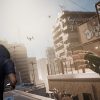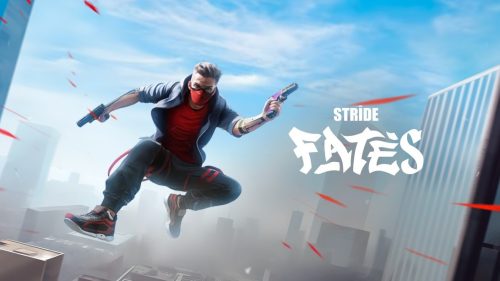
Remember Stride? Of course, you remember Stride! It’s an excellent parkour game that came out on Quest a while back, pretty much cementing developer Joy Way’s skills at implementing fantastic VR traversal. It took a bit of getting used to, but once you got there, it provided a Zen-like parkour experience, making you feel a dense sense of flow and action as you sprinted, did wall-runs, leaped, and grappled your way across the levels. With time, it gained more modes, and multiplayer, and is easily one of the best games on Quest for fans of this particular gaming genre, drawing comparisons with those days of excellence when EA were releasing games like Mirror’s Edge, rather than the two thousandth installment of Call of Battlefront.
But wait! JoyWay said, what about we have an actual narrative-driven campaign using Stride mechanics? Wouldn’t that be cool?
Yes, that would be fantastic, said the fan base!
And lo, Stride: Fates was announced, and things quickly got messy. I won’t get into the complex timeline, but JoyWay are better at making games than they are at communicating, and a mixup ensued. Would it be a free update to Stride? A DLC? Would it be a separate game? Confusion! After a poorly received one-hour campaign, JoyWay decided to go back to the drawing board, and flesh out Fates into a separate single-player campaign game.
So, finally, Stride: Fates is here. How is it? Was it worth the wait? Is the new and improved game engine kicking butt? Let’s find out!
Taking it in Stride
Fates casts you as a slum dog in the dystopian Airon City. You’ve been recruited as a chaser by the elite forces of SkyChase, the blurb claims that your ‘fate’ is bound to various other characters, but that’s not really true. The only character you have any kind of actual connection to is your handler, who shows up a few times as a hologram to guide you, but mainly screams quite painfully whenever you die.
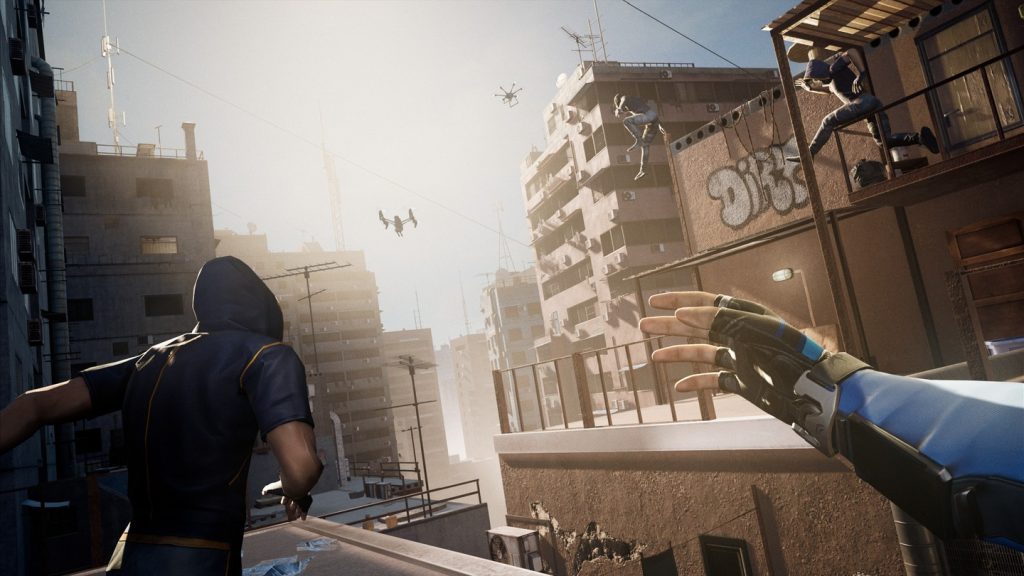
The narrative, well, the narrative..exists, but it’s not about to win any prizes. It’s mostly there to act as glue between the levels, giving them some sort of context, but it’s not something you’ll get emotional about one way or the other.
But that doesn’t really matter, right? I mean, we’re all here for the parkour and the Shooty Shooty, right?
So let’s talk about the gameplay.
The action in Stride: Fates takes place across 12 levels, and it’ll take you about 7-9 hours to complete. You start off with a pistol, and you’ll soon acquire a shotgun, and finally, a machine gun. All your weapons are upgradable.
The levels, commendably, offer a good variety of gameplay styles, some are straight-up action shooters, some lean more towards the parkour origins of Stride, and a couple lean more towards stealth gameplay.
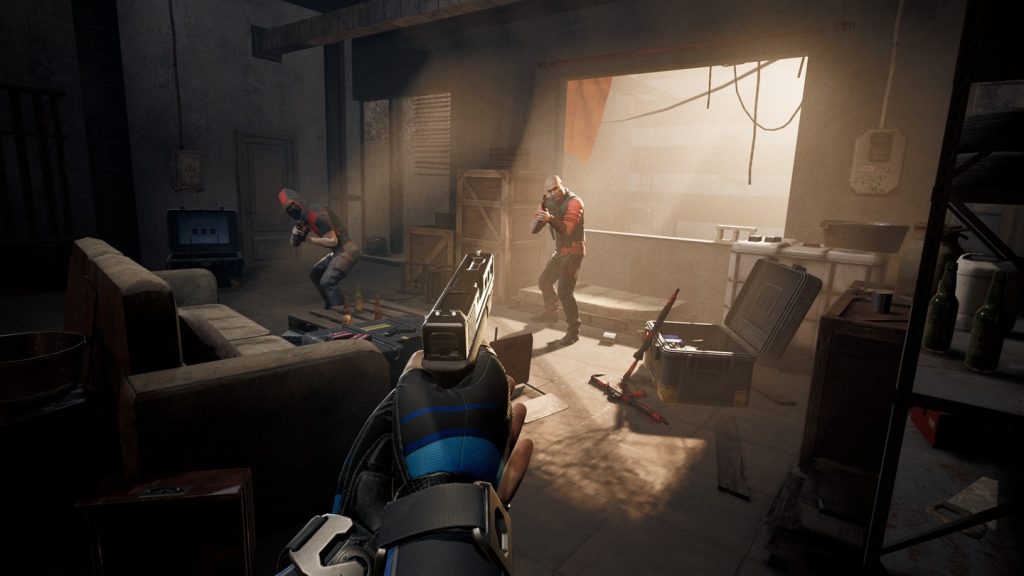



The shooter levels are a mixed bag, the early ones are annoying because the starting pistol without upgrades lacks a satisfying punch and the levels aren’t designed in a way that only intermittently encourages parkour, so you end up feeling like you got a middling shooter at the expense of what made Stride so much fun in the first place.
To be fair, though, the action shooter levels towards the later half of the game play, and feel much better. Partly because, by then, you’ve got much better weapons, partly because their design is better at providing flowing traversal, and partly because, by then, you’ve learned how to get around some of the annoyances Stride: Fates comes with, but more on those issues later.
The stealth levels feel undercooked and out of place, I don’t put on Stride, Fates, or otherwise, to crawl through air vents, dodge security cameras, and sneak up on baddies, especially when I seem to be a disembodied head inside the vents, with my eyes almost level to the bottom of the vents. Remember hand in the Adams Family? Hand, meet Head. Head, meet Hand. Splinter Cell VR, this ain’t.
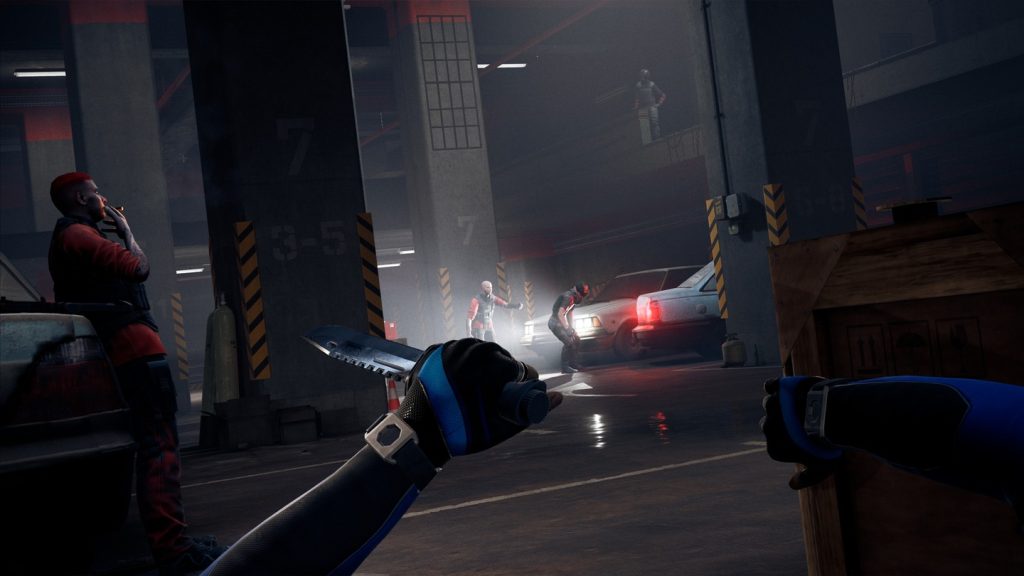



Then there are the parkour levels, and unsurprisingly, these are the levels that shine, this is what Stride does best, and it shows. You have the parkour flow, shooting people while you jump, duck and weave, wall running, grabbing ledges, and climbing non-stop. These levels can be exhilarating.
In terms of enemies, there’s a decent, if not impressive variety; regular dudes. Dudes with shields. Long-range sniper-ish dudes, dudes with chain guns, drones, and one final boss. As I write this, I just realized, all the baddies are dudes. Is this sexism or misandry? Who knows, better yet, who cares? Save the city, and ask questions later.
Airon Aesthetics
For a dystopian city, Airon looks pretty good and oddly clean. It lacks a distinct style, so it would fare very poorly if compared to Mirror’s Edge, which had a visual signature so distinctive that anybody who’s played it is seeing it in their mind’s eye right now just because I mentioned it, but that’s not to say the reworked Stride doesn’t look good, it does. You have puddles on the floor, reflections on some surfaces, and a decent amount of detail, and the game can throw quite a few enemies on screen for you to face off against when it wants to overwhelm you.
Airon-Phonics
The audio in Stride: Fates is a mixed bag. The voice acting of your handler is generally alright, but the scream she makes on the radio when you die is so overacted as to be painful, making me wish she just said a tragic, “Oh, No..” If you’re anything like me, the first time you hear it, you’ll laugh, but by the third, you’ll hate it. Hey, if that motivates you to stay alive, that’s a good thing, right?
The sound design is somewhat lacking. The weapons don’t pack much of a sonic punch, not with the shooting, and certainly not with the reloading. The game could use a fuller soundscape, I want the guns to sound powerful I want the reloading to be satisfying, I want to hear my steps a little more, I want to feel my heart pounding along to the action. It’s not quite there. The music, along the same lines, is action-packed, keeping you going and setting the right mood, but it’s repetitive and cliche-ridden. This should be better by release since JoyWay said the next patch would add more music variety.
But the patches have a few more problems to fix. Let’s talk about those.
Chasing Chasers
In some respects, especially during the first half of the campaign, it almost feels like JoyWay have bitten off a little more than they can comfortably chew. The earlier levels, as mentioned feel like they’ve sacrificed what Stride is good at for a second-rate shooter. For a game with parkour in its DNA, you start and stop too much, you pause, you turn around, you spend time looking at nooks and crannies to find upgrade packs for your weapons, the remote grab, and the grab controls often get mixed up, so you find yourself grabbing a table instead of quickly picking up the health syringe that’s on it, all these things nibble away at the flow of the game, making it feel like the Parkour-Shooter is, if you’ll pardon the inevitable pun, shooting itself in the foot.
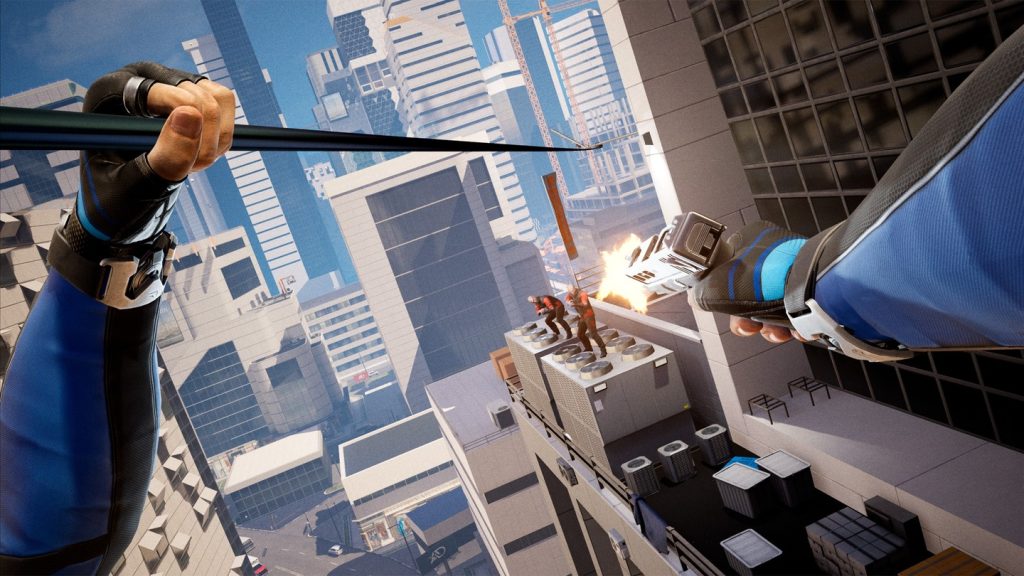



One of these is just an example of poor game design. Upgrade packs should be along your path or along alternate paths, not hidden away from your path. Or, more fluidly, should be rewarded for parkour skills and achievements or run completion times.
There are also some mechanical inconsistencies, especially with the Yakuza level clearly inspired by JoyWay’s own Red Flowers, where sometimes you can’t simply run up steps, you have to jump over them, only to sometimes find yourself sliding back down and then have to hop hop to get to their end. This shouldn’t happen, at all. Maybe the assets were ported over from Red Flowers into Fates and not quite adapted properly? I don’t know.
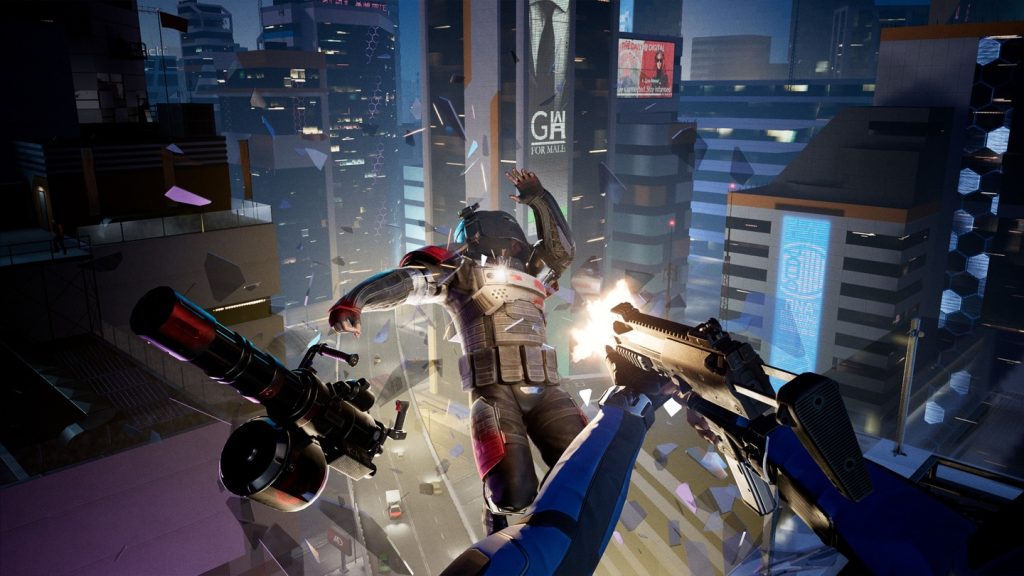



I also run into some bugs, but I’ll avoid harping on those since one patch has already been released and another should be out by the time you watch this, so hopefully those should have been resolved. One particularly annoying bug made it impossible to continue a level on dying, which meant I had to finish that level in one uninterrupted run. Git Gud, as they say.
Violent Endings
Stride: Fates is the closest you’ll get to Mirror’s Edge on standalone VR, but it’s nowhere near as polished and perhaps should have stayed in the oven just a little bit longer. It needs to be tweaked to make sure that the shooter elements are either much improved, especially in the early levels, or that they don’t impede the parkour elements. Nobody will convince me that the stealth levels belong, and although the narrative promise is fulfilled, the story fails to engage players and does little more than justify the level progression.
Having said that, some levels truly work; the shooting and the traversal and the design all mesh together and it feels like you’re a parkour-gifted demon who’s wall running, grappling, and sprinting as you mow down enemies. In those moments, it rises above its issues and makes you forget all the issues you have with it, and when THAT happens it’s beautiful.
So, let’s conclude by saying this; Stride: Fates is a parkour shooter that sometimes stumbles into mediocrity while trying to serve two masters, however, it is also occasionally capable of joining them together into the flow-shooter we all imagined it could be, I just wish that it succeeded at doing so much more often.
This post was originally published on this site be sure to check out more of their content.


